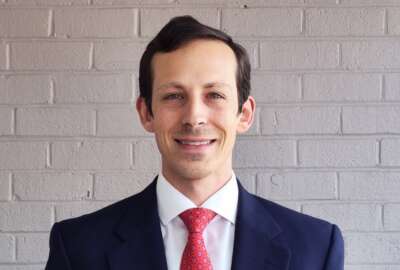
Research into leukemia drug makes National Cancer Institute doc a Sammies finalist
A breakthrough leukemia drug is on the market through a major drug manufacturer. But a research doctor at the National Cancer Institute made the discoveries that...
Best listening experience is on Chrome, Firefox or Safari. Subscribe to Federal Drive’s daily audio interviews on Apple Podcasts or PodcastOne.
A breakthrough leukemia drug is on the market through a major drug manufacturer. But a research doctor at the National Cancer Institute made the discoveries that led to the drug in the first place. Now he’s expanding work on what are known as recombinant immunotoxins. For his work, Dr. Ira Pastan is a finalist in this year’s Service to America Medals program, and he joined Federal Drive with Tom Temin to discuss more.
Interview transcript:
Tom Temin: Dr. Pastan, good to have you on.
Ira Pastan: Hello.
Tom Temin: So let’s talk about this drug. It’s on the market from AstraZeneca. But you did some work leading to this whole idea of the recombinant immunotoxins. What’s the grand challenge here that you were faced with in your work that you have solved, apparently?
Ira Pastan: Well, I work in the National Cancer Institute. And something like 600,000 people die every year from cancer despite all the amazing breakthroughs you’ve heard about in the last few years. So it’s still an enormous challenge. So I’m trained as a physician and I came to NIH in 1961 – a long time ago – part of my military service, and enjoyed working there so much I ended up spending my life there. Initially, I did basic research in how genes worked and how hormones control cell growth and how proteins bound to cells and entered cells. But about in the late 70s or so I thought since I was a physician and doing basic research, I would try to apply what I’ve learned and knew to develop drugs to treat cancer. It was partly stimulated by friends, two close friends who developed and died from cancer, sure.
Tom Temin: My understanding of cancer, which is limited, is that it is actually a thousand different things, right, so you’ve had to kind of decide where to focus your research, correct?
Ira Pastan: So that is correct, and cancers – the cause of cancer is a thousand different things. But there are some things in common, of course, like they grow and grow and spread and spread. So one approach is to find out the mutation or something that caused the cancer, try to fix that. But we don’t do that. We try to – another approach. And our approach is dependent on the fact that on the surface of cancer cells, there are some proteins and sometimes these proteins are just on the cancers, or just in the cancer and a non-essential tissue. So you can use an antibody to that protein to target the cancer without damaging essential organs. For example, in this drug, which treats a leukemia, so-called B-cell leukemia, there are proteins on the surface of the B-cell leukemia that are also in B-cells. But the B-cells can be regenerated if you kill them. Whereas the cancer cell if you kill them won’t come back. So we take advantage of the fact that the protein on the surface of this leukemia cell has a funny name. It’s called CD22. And we used an antibody to that protein and then attached to it a very powerful bacterial toxin to make what we call an immunotoxin. And then we use modern techniques of genetic engineering and protein engineering, to put it all together in a special way and make it an E coli. And hence, we call it “recombinant” for recombinant DNA immunotoxin. So this protein is expressed on several different kinds of leukemias, which have different origins. We focused on one leukemia to begin with, because it has a lot of that protein on the surface, and the cells are easier to kill – not easy to kill, but easier to kill.
Tom Temin: But there are presumably then other types of cancer cells that have that characteristic, maybe not as –
Ira Pastan: So there are. So there are other kinds of B-cell malignancies, so-called malignancies that arise in normal B-cells – B-cell lymphomas and leukemias of various sorts such as chronic lymphocytic leukemia, which is very common. Which all have CD22 on their surface. And now that our drug has been FDA approved for treating one disease, called hairy cell leukemia or drug-resistant, hairy cell leukemia, we are beginning to study it in other cancers.
Tom Temin: We’re speaking with Dr. Ira Pastan, he’s distinguished investigator at the National Cancer Institute and a finalist in the Service to America Medals program. And when these things get commercialized, I always think about the people in places like the National Cancer Institute. And what has kept you from just jumping over to industry in all these years, and I know scientists from NIH that have and get 10 times the salary.
Ira Pastan: Yes. So the attractiveness of working at NIH is you are free to follow your instincts to do high risk research that could be very productive and make your own decisions. You have wonderful colleagues and a wonderful working environment. If you go to industry where of course you can make a lot more money, your life is different. You work in a team, you may not be able to choose your project, who knows where you’re going to live, or have to travel? So you do not have as much control of your life when you move to industry.
Tom Temin: God forbid you could end up in New Jersey.
Ira Pastan: I’ve been offered jobs in Rahway, New Jersey, absolutely.
Tom Temin: All right. And I wanted to get a sense of within the institute, within NIH and then within the National Cancer Institute – what is it institutionally that you feel enables this kind of success that you’ve had? What does it take to run an operation like that such that the scientists can have this kind of success?
Ira Pastan: Well, first of all, let me begin by saying we are not free spirits. We are carefully reviewed every four years by outside experts so that they judge us to be doing outstanding work. Otherwise we couldn’t do it. But if you are judged to be doing outstanding work, you have long term support. So you can work on a project that might take five or 10 or even 15 years to come to fruition as this project did. So the advantages of long-term support for high risk research as long as it is judged to be sound by your colleagues.
Tom Temin: Yeah, so you’re not really in an ivory tower, so to speak, you do have regular contact –
Ira Pastan: There’s no ivory towers in research. It’s very competitive. You work very hard to be sure you’re at the top. That is correct.
Tom Temin: And you’ve been working a long time. You mentioned, I believe, 1961 you joined NIH?
Ira Pastan: Yes. So I came here as part of the program, for doctors who could come to work at NIH instead of joining the Army or overseas, called the Berry Plan, a long time ago. But and then after a few years, I had my choice of leaving or staying. But I really enjoyed doing research here. And we decided to stay.
Tom Temin: Dr. Ira Pastan is distinguished investigator at the National Cancer Institute. Thanks so much for joining me.
Ira Pastan: My pleasure.
Tom Temin: And he’s also a finalist in the Service to America Medals program. We’ll post this interview along with a link to more information at FederalNewsNetwork.com/FederalDrive. Subscribe to the Federal Drive at Apple Podcasts or Podcastone.
Copyright © 2024 Federal News Network. All rights reserved. This website is not intended for users located within the European Economic Area.
Tom Temin is host of the Federal Drive and has been providing insight on federal technology and management issues for more than 30 years.
Follow @tteminWFED





